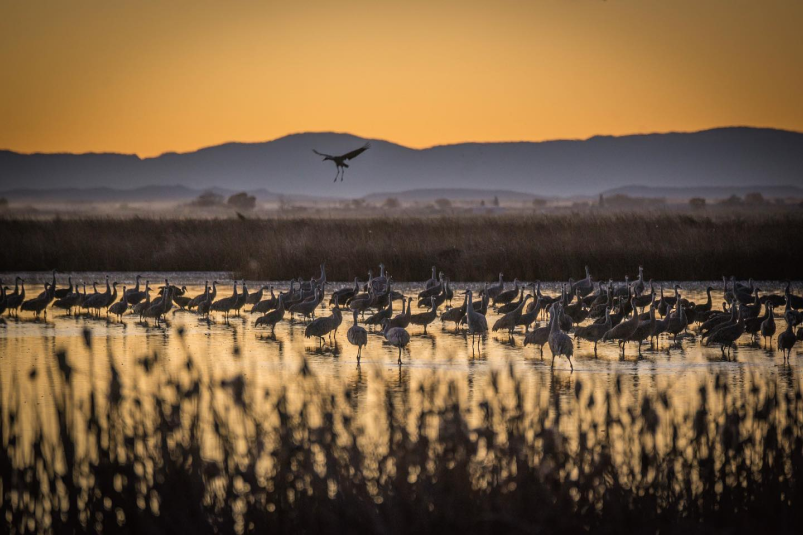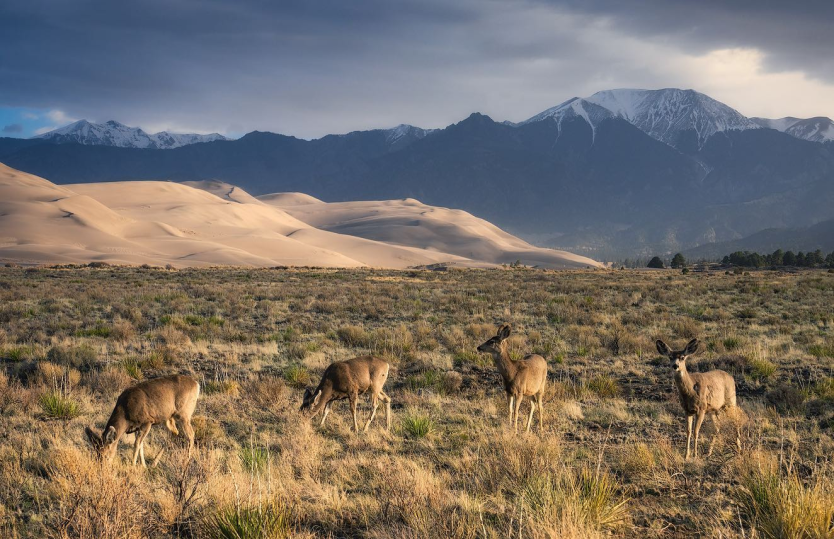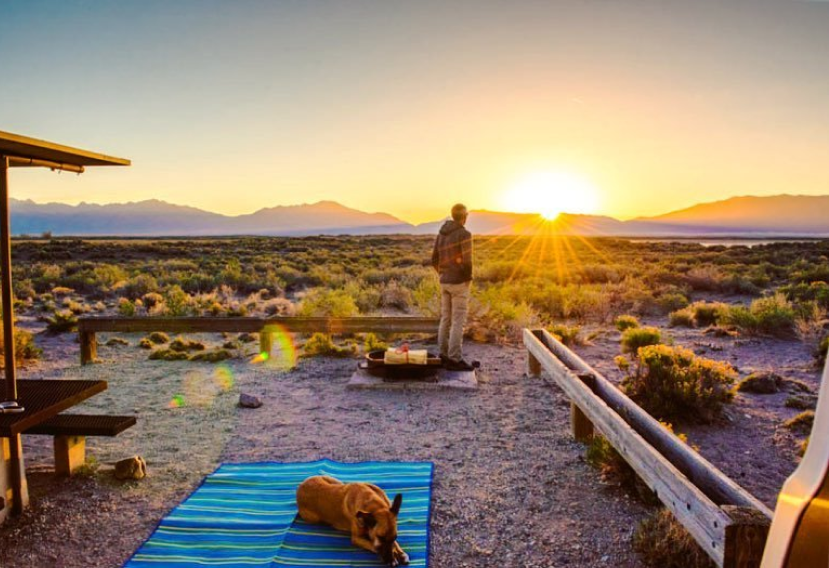A Guide to Photography in Colorado’s Mystic San Luis Valley
The San Luis Valley of Colorado is a photographer’s dream. Whether you carry a cell phone or a telephoto lens, head to this part of Colorado and photograph iconic destinations. The Great Sand Dunes National Park is one of the most picturesque places in Colorado, but it’s not the only place to nab killer photos. Thanks to the area’s unique range of biodiversity, you can wander through high alpine deserts and dunes, wetlands and lakes, mountain tops, and forests all within the same day while taking in views that’ll make you swear you’ve stumbled onto another planet. Inside the valley, you’ll find multiple wildlife refuges that make for great wildlife viewing, and the open expanse of earth and sky make for striking landscapes.
Below, you’ll find a few different places to start your next adventure and find unique perspectives worth capturing on film. The best part? All of these locations are just a short drive from the main hub in the valley: Alamosa.

Basecamp
First thing’s first, you’ll want to find a place to stay. Alamosa is the largest town in the San Luis Valley and easily packs the most amenities 9along with other fun things to do in Colorado). There’s a wide range of hotel and camping options keen to every budget. When it comes to food you’ll definitely want to make time for Calvillo’s, an Alamosa classic found downtown. While there are over 50 restaurants and cafes to choose from, this authentic Mexican restaurant lives up to its hype and boasts natural ingredients produced not far from town. The best place to grab a cold one at the end of the day is the San Luis Valley Brewing Company in downtown Alamosa.
Great Sand Dunes National Park and Preserve
The Great Sand Dunes National Park and Preserve is one of the most interesting landscapes to photograph. The Sangre de Cristo mountains are a collection of giant, craggy peaks, most reaching heights between 11,000 and 14,000 ft.! Nestled against these peaks are the Great Sand Dunes, and from the right angle, they almost seem to mimic the towering mountains above them.

What Makes the Sand Dunes So Great?
The striking contrast of the sand against the mountains alone makes for compelling images. The way the light dances on the sand and the clouds flicker across the sky creates interesting patterns and shadows across the sand. I have visited the dunes on multiple occasions, and each time the light and weather have been different, offering a unique experience each time. In the evening the sun glows across the landscape, casting orange and yellow hues. The texture of the sand adds interesting patterns to photos and exaggerates the contours of the dunes. The dunes are endlessly in motion offering a unique subject each visit.

San Luis Valley National Wildlife Refuge Complex
Early in the morning, the quick drive out to the Alamosa Wildlife Refuge is a wonderful treat. The sky is streaked with pinks and yellows as the sun rises over the Sangre de Cristo mountain range in the distance. Inside the refuge, sounds from birds ring across the ponds and tall grasses.
I wish I could have bottled up the feeling of peace and tranquility that I felt that morning. The wildlife refuge is a great place to practice wildlife photography. Though a larger zoom lens would have been nice, I was still able to capture some great action that morning with my 70-200mm telephoto lens. Nearby we could see a variety of birds and a beaver swimming in a pond, while in the distance we heard the yips and howls of coyotes!
Top Locations Near Alamosa to Find Wildlife
Explore the best wildlife viewing spaces the San Luis Valley has to offer.
 Photo: @hauserhandcrafted
Photo: @hauserhandcrafted
1
San Luis Valley National Wildlife Complex
Finding a venue for bird and wildlife watching isn’t difficult around these parts. One of the choice locations to visit is the San Luis Valley National Wildlife Refuge Complex, a group of three disparate but nearby refuge areas containing over 199,000 acres of vibrant ecosystems. Together, they are the Alamosa-Monte Vista-Baca Wildlife Refuge areas. Now connected by one administrative team striving toward the goal of improved conservation efforts, each of the three locations has something special to offer—not to mention breathtaking views!
 Photo: @josetorresphoto
Photo: @josetorresphoto
2
Great Sand Dunes National Park
The Great Sand Dunes National Park and Preserve offers an outstanding wildlife watching venue in itself, packed with layers of naturally diverse ecosystems spanning dunefield to alpine tundra. Over 250 bird species have been identified within the park alone. For a complete list of residential wildlife provided by the Great Sand Dunes National Park, click here.
 Photo: @travelexplorephotos
Photo: @travelexplorephotos
3
San Luis Lakes State Park
San Luis Lakes is a state park offering a wide variety of recreation and wildlife viewing all in one. With close proximity to the Great Sand Dunes, visitors can camp, fish, and even motorboat (conditions permitting) on the lake while enjoying the vast views of the valley.
Don’t Limit Yourself
Hanging by the Visitor’s Center is already an exciting location for wildlife photography, but the refuge spans 12,026 acres. You can drive to other locations in the refuge, or even hike the 2 mile Rio Grande Nature Trail. Wherever you travel within the refuge though, you will consistently have the jagged peaks of the Sangre de Cristo as a dramatic backdrop for your photos.

But Wait, There’s More!
For more landscape photography, consider trekking up the Mosca Pass Trail near the Great Sand Dunes National Park where you can capture the dunes from above. Other interesting places to practice landscape photography include Zapata Falls and Penitente Canyon near Del Norte. You’ll likely find interesting landscapes just cruising along the highways in the area, too. For more wildlife photography, there are other wildlife refuges in the San Luis Valley including both the Monte Vista and Baca Wildlife Refuges.

This story was created in partnership with Visit USA Parks, and updated 9/23/2021.





